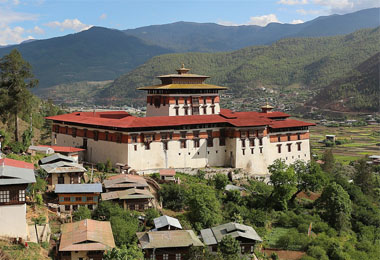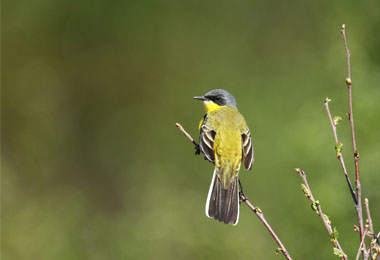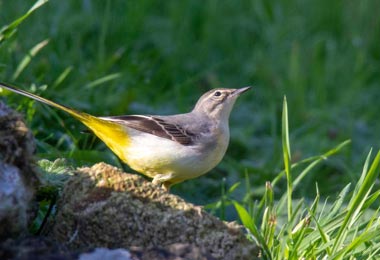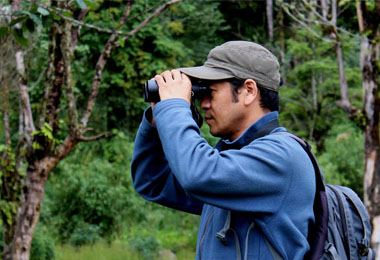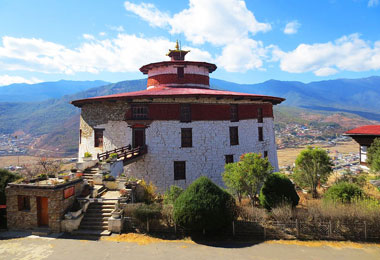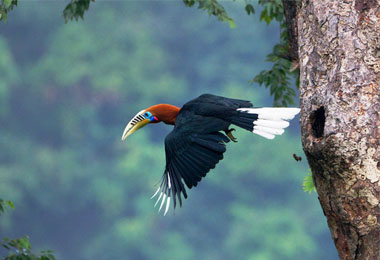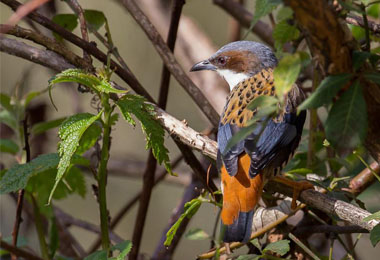
19 Days Bhutan East Birding Tour
(BBT002) Paro - Punakha - Phobjikha - Trongsa - Zhemgang - Tingtibi - Bumthang - Sengor - Namling - Yongkola - Trashigang - Samdrup Jongkhar - Guwahati
-
Tour Type:
Escorted by private guide and vehicle; leave 365 days a year!
-
Trip Level:
Easy - suitable for all level of fitness, family with kids and senior groups.
-
Trip Level Guide:
- Easy - suitable for all level of fitness, family with kids and senior groups.
- Moderate - suitable for ones with average level fitness, family with kids bigger than 12 yrs.
- Moderate to Strenous - suitable for ones physically fit; have experiences of high altitude trek.
- Strenuous: suitable for adventures and individual with physically fit and healthy.
-
Season:春
Spring夏
Summer秋
Autumn冬
Winter
Overview
Bhutan east birding tour initiates from the west, and goes eastwardly by following the only main road connecting the west and east in Bhutan before passing through a great number of Bhutan’s best birding sites in the kingdom.
The tour takes you to a great number of gorgeous valleys from west to the far-east and guides you to some of the off the beaten tracks to trace the rare bird species and find their habitats.
Meanwhile, the tour also ascends you to some comparatively higher places through temperate and alpine forests to see much more stunning views as well as some precious bird species.
Besides, Bhutan East Birding Tour also includes camping near birding sites for longtime observation, cultural visits, night halts in interior towns and short day hikes.
At a Glance
Day 1Arrive in Paro (2,250 m)
Day 2Birding in Paro (2,250 m)
Day 3Paro (2,250 m) - Punakha (1,242 m) (124 km/4 hrs)
Day 4-5Birding in Punakha (1,242 m) - Gasa (2,600 m) (47 km/3 hrs)
Day 6Punakha (1,214 m) - Phobjikha (3,000 m) (70 km/2.5 hrs)
Day 7Phobjikha (3,000 m) - Trongsa (2,200 m) (87 km/3 hrs)
Day 8Trongsa (2,200 m) - Zhemgang (1,900 m) - Tingtibi (551 m) (130 km/4.5 hrs)
Day 9-10Exploring Tingtibi (551 m)
Day 11Tingtibi (551 m) - Bumthang (2,800 m)
Day 12Exploring Bumthang (2,800 m)
Day 13Bumthang (2,800 m) - Sengor (3,050 m) (97 km/5 hrs)
Day 14Sengor (3,050 m) - Namling (2,400 m) - Yongkola (2100 m) (Total 4 hrs)
Day 15-16Explore Yongkola (2,100 m)
Day 17Yongkala (2,100 m) - Trashigang (3,773 m) (139 km/5 hrs)
Day 18Trashigang (3,773 m) - Samdrup Jongkhar (173 m/ at least 6 hrs)
Day 19Samdrup Jongkhar (173 m) to Guwahati (300 m) in India (105 km/4 hrs)
Day to Day Itinerary
Day 1: Arrive in Paro (2,250 m)
On arrival in Paro, your tour guide is ready to be there for you before picking you up and escorting you from the airport to your hotel.
In the afternoon, birding along the Pachhu river, you will sight water birds like; Ibisbill, Brown Dipper, White-capped Water Redstart, River Lapwing, Plumbeous Water Redstart, etc.
Stay overnight in hotel, Paro.
Day 2: Birding in Paro (2,250 m)
Day 3: Paro (2,250 m) - Punakha (1,242 m) (124 km/4 hrs)
Set off early in the morning and drive to the valley of Punakha with stop over Dochu La (pass) at 3,050 meters (10,006 ft.). The snow-capped eastern Himalayan range stand solemnly in front of your eyes. At present, you can circumambulate the 108 stupas of the Druk Wangyal Chorten which were constructed under the commission of the eldest Queen Mother, Her Majesty Ashi Dorji Wangmo Wangchuk.
Then drive down to Punakha and Wangduephodrang valleys where a numerous number of common and rare species can be spotted. Himalayan Cutia, Yellow-billed Blue Magpie, Collared Grosbeak, Red Crossbill, Golden-breasted Fulvetta, White-browed Fulvetta, Fire-tailed Myzornis, Plain Mountain Finch, Mrs Gould’s Sunbird, Green-tailed Sunbird, Black-throated Parrotbill, Himalayan Bluetail, White-browed Bush Robin, Rufous-breasted Bush Robin, Rufous-gorgeted Flycatcher, Ultramarine Flycatcher, Brown Bullfinch, Red-headed Bullfinch, Chestnut-tailed Minla (Bar-throated Siva) , Dark-breasted Rosefinch, Little Bunting, White-bellied Heron, Common Kingfisher, White-throated Kingfisher, Crested Kingfisher, Grey Treepie, Spotted Nutcracker, Speckled Wood Pigeon, Slaty-backed Forktail, Spotted Forktail, Eurasian Jay, Ultramarine Flycatcher, Rusty-cheeked Scimitar Babbler, etc set their nests in the valleys, bringing vigor and vitality to the entire Punakha areas.
Overnight stay in hotel, Punakha.
Day 4-5: Birding in Punakha (1,242 m) - Gasa (2,600 m) (47 km/3 hrs)
Drive along the Pochu River. In this stretch you will sight Jungle Owlet, Asian-barred Owlet, Osprey, White-bellied Heron, Pallas Fish Eagle, Lesser Fish Eagle, Great Cormorant, Black-throated Sunbird, Green-tailed Sunbird, Black-throated Yuhina, Striped-throated Yuhina, Whiskered Yuhina, Straited Yuhina, Scarlet Minivet, Long-tailed Minivet, Grey-chinned Minivet, Barred Cuckoo Dove, Fire-breasted Flowerpecker, Darjeeling Woodpecker, Bay Woodpecker, Chestnut-headed Tesia, Slaty-bellied Tesia, Grey-bellied Tesia, White-gorgeted Flycatcher, Large Niltava, Small Niltava, Rufous-bellied Niltava, Great Barbet, Blue-throated Barbet, Golden-throated Barbet, Asian Koel, Grey-hooded Warbler, Golden-spectacled Warbler, Tickell’s Leaf Warbler, Lemon-rumped Warbler, Buff-barred Warbler, Slaty-backed Forktail, Spotted Forktail, Black-backed Forktail, Yellow-bellied Fantail, White-throated Fantail, Rusty-fronted Barwing, Hoary-throated Barwing, Blue-fronted Robin, Lesser Shortwing, Himalayan Cutia, Green Shrike-babbler, Rufous-winged Fulvetta, Yellow-throated Fulvetta, Black-eared Shrike-babbler, Spotted Wren Babbler, Pygmy Wren Babbler, Speckled Piculet, Orange-bellied Leafbird, White-tailed Nuthatch, Maroon Oriole, Scarlet Finch, Wedge-tailed Green Pigeon.
Stay overnight in tented camp.
Day 6: Punakha (1,214 m) - Phobjikha (3,000 m) (70 km/2.5 hrs)
Saying goodbye to these lovely creatures you will continue to drive eastward from Punakha to Phobjikha through the black mountain region. Phobjikha valley is one of the most important wildlife preserves in Bhutan, for it serves as the nesting place for the endangered Black-necked Crane in winter.
Meanwhile, you can also spot many other bird species in this region including the Yellow-rumped Honeyguide, Blue-capped Rock Thrush,Fire-tailed Myzornis, Great Parrotbill, Alpine Accentor, Green-tailed Sunbird, Fire-tailed Sunbird, Rufous-vented Yuhina, Whiskered Yuhina, Scaly Thrush, Tickell’s Thrush, Fire-capped Tit, Amur falcon, Ward’s Trogon, Blue Rock Thrush, Black-faced Laughingthrush, Spotted Laughingthrush, Fire-breasted Flowerpecker, Red-headed Bullfinch, Scarlet Finch, White-tailed Nuthatch, etc.
Overnight stay in hotel, Gangtey.
Day 7: Phobjikha (3,000 m) - Trongsa (2,200 m) (87 km/3 hrs)
The three-hour drive from Phobjikha to Trongsa through Pele La (3,390 m, 11,122 ft.) seldom makes anyone running on this trail feel tired or spiritless since the entire trip takes you to the evergreen forests where lush oak trees with clusters of rhododendrons can be sighted. The horse chestnuts, laurels, maple and fir trees, spruces, larches, hemlocks and junipers thrive in the forests.
With botanical diversities, here is also a perfect place for birding. Grab your binoculars and get off the car, you may fell overjoyed with the bird species you spot here. Laughingthrush, Crested Serpent Eagle, Mountain Hawk Eagle, Common Kestrel, Himalayan Griffon, Himalayan Swiftlet, Asian House Martin, Nepal House Martin, Common Rosefinch, Beatiful Rosefinch, White-browed Rosefinch, Slender-billed Scimitar Babbler, Streaked-breasted Scimitar Babbler, Brown Parrotbill, Scaly-breasted Wren Babbler, and Speckled Wood Pigeon are playing around in the forest. Some jump swiftly from branches to the top ends while the intimidated ones fly right in front of you and give you an intimate contact.
Overnight stay in hotel, Trongsa.
Day 8: Trongsa (2,200 m) - Zhemgang (1,900 m) - Tingtibi (551 m) (130 km/4.5 hrs)
Today’s trip begins from the drive to Zhemgang and Tingtibi by following the Mangde Chhu River. Species found in this area are Pin-tailed Green Pigeons, Red-Headed Trogon, , Blue-bearded Bee-eater, Chestnut-breasted Partridge, Hill Partridge, Coral-billed Scimitar Babbler, Rufous-necked Hornbill, Great Hornbill, White-browed Piculet, Speckled Piculet, Bay woodpecker, White-tailed Robi, White-browed Scimitar Babbler, Black-faced Laughingthrush, Grey-headed Parrotbill, White-throated Needletail, Mountain Scops Owl, Collard Scops Owl, Collared Treepie, Pygmy-blue Flycatcher.
Try being patient searching for much rarer bird species here for there is still a chance of spotting the highly endangered White-bellied Heron as well as the Collared Treepie, Beautiful Nuthatch, Lesser Rufous-headed Parrotbill, Greater Rufous-headed Parrotbill, Lesser-necklaced Laughingthrush, and Greater Necklaced Laughingthrush.
Overnight in tented camp.
Day 9-10: Exploring Tingtibi (551 m)
Explore Tingtibi, a settlement located in Zhemgang District, is another amazing place to spot Bhutan Birds. you can spot the Great Hornbill, Rufous-necked Hornbill, Wreated Hornbill, Lesser Yellownape, Scarlet minivet, Sultan Tit, Black-eared Shrike-babbler, White-bellied Erpornis, Long-tailed Sibia, Silver-eared Mesia, Red-billed Leiothrix, Bar-throated Siva, Blue-Winged Siva, Red-tailed Minla,Red-faced Liocichla, Rufous-necked Laughingthrush, Rufous-chinned Laughingthrush, Straited Laughingthrush, White-crested Laughingthrush, Jungle Babbler, Golden Babbler, Grey-throated Babbler, Pin-striped Tit Babbler, Long-billed Wren Babbler, Eye-browed Wren Babbler, Scaly-breasted Wren Babbler, Pygmy Wren Babbler, Puff-throated Babbler, Abbott’s Babbler, Chestnut-crowned Warbler, Grey-cheeked Warbler,Whistler’s Warbler, Rufous-faced Warbler, Black-faced Warbler, Mountain Tailorbird, Common Tailorbird, Rufescent Prinia, Straited Prinia, Mountain Bulbul, Red-whiskered Bulbul, Black-crested Bulbul, Common Green Magpie, Black-hooded Oriole, Maroon Oriole, Slender-billed Oriole, Greater Racket-tailed Drongo, Lesser Racket-tailed Drongo, Spangled Drongo, Common Iora, Black-winged Cuckooshrike, Large Cuckooshrike, Bar-winged Flycatcher-shrike, Large Woodshrike, Long-tailed Broadbill, Silver-eared Broadbill,Collared Falconet, Himalayan Goldenback, Greater Goldenback, Grey-capped Pygmy Woodpecker, Rufous-bellied Woodpecker, Rufous Woodpecker, Grey-headed Woodpecker, Eurasian Wryneck, Blue-bearded Bee-eater, Chestnut-headed Bee-eater, Green Bee-eater, Dollarbird, Chestnut-winged Cuckoo, Emerald Dove, Ashy Woodswallow, Lesser Coucal, Greater Coucal, Green-billed Malkoha,Green Imperial Pigeon, White-rumped Shama, Siberean Rubythroat, Velvet-fronted Nuthatch, White-hooded Babbler, and many species of other Woodpeckers, Blyth’s Kingfisher, and chances of sighting Hodgson’s Frogmouth, and Pied Falconet, etc.
Overnight in tented camp.
Day 11: Tingtibi (551 m) - Bumthang (2,800 m)
In the morning, you will never miss the chirping of the Beautiful Nuthatch and the Sapphire Flycatcher. After breakfast, the bus will first drive you to Trongsa Dzong which was built in 1648 and then the bus will make a temporary stop at Ta Dzong which houses the royal heritage museum.
Then continue heading for Bumthang area by crossing the Yotong La pass at the height of 3,400 m (11,154 ft.). The bus will make a short-time stop at the pass, so you can spot species like Bar-throated Siva, Brown Parrotbill, Hill Partridge, Black-faced Laughingthrush, Chestnut-crowned Laughingthrush and Gold-naped Finch. Evening walk along the Chamkhar River to spot few species like little bunting, Red-billed Chough, Blyth’s Pipit, and Common Sandpiper.
Overnight stay in hotel, Bumthang.
Day 12: Exploring Bumthang (2,800 m)
Bumthang areas have the most charming sceneries in Bhutan and a great number of rare birds setting nestles here. During the day, pheasants can be sighted if you missed their figures in the previous days. Visit Tharparling Monastery for magnificent Himalayan Monal and Satyr Tragopan. Besides, you have the chance to sight Spot-winged Grosbeak, Daurian Redstart, Olive-backed Pipit, Oriental Skylark and Black-billed Magpie if you have patience.
Overnight stay in hotel, Bumthang.
Day 13: Bumthang (2,800 m) - Sengor (3,050 m) (97 km/5 hrs)
Morning drive to Sengor passing over Thrumsingla pass at 3800 m (12,467 ft.). The species you would encounter are Blood Pheasant, Satyr Tragopan, Spotted Nutcracker, Fire-tailed Myzornis, Fire-tailed Sunbird, Red-headed Bullfinch, Grey Wagtail, Fire-breasted Flowerpecker, Blue-bearded Bee-eater, Fire-tailed Myzornis, Great Parrotbill, Yellow-rumped Honeyguide, Orange-flanked Bush Robin, Stripe-throated Yuhina, White-browed Fulvatas, Satyr Tragonpan, Blood Pheasnat, Himalayan Monal, White-throated Fantail, Rufous-throated Partridge.
Overnight in tented camp.
Day 14: Sengor (3,050 m) - Namling (2,400 m) - Yongkola (2100 m) (Total 4 hrs)
Today you travel to Namling and to Yongkola in search of species like Gould’s Shortwing, Bar-winged Wren Babblers, Yellow-rumped Honeyguide, Black-headed Shrike Babbler, White-browed Shrike Babbler, Ward’s Trogon, Slender-billed Scimitar Babbler, Blue-throated Barbet, Golden-throated Barbet, Great Barbet, Golden Bush Robin, and Chestnut-breasted Partridge.
Overnight in tented camp.
Day 15-16: Explore Yongkola (2,100 m)
In this area you will sight Rufous-necked Hornbil, Tawny Fish Owl, Ward’s Trogon, Red-headed Trogon, Rufous-throated Wren Babbler, Scaly-breasted Wren Babbler, Pygmy Wren Babbler, Himalayan Cutia, Grey-winged Blackbird, Hoary-throated Barwing, Rusty-fronted Barwing, Steak-breasted Scimitar Babblers, Collar-billed Scimitar Babbler, Coral-billed Scimitar Babbler, Long-tailed Minivet, Short-billed Minivet, Grey-chinned Minivet, Scarlet Minivet, Pallas’s Fish Eagle, Rufous-bellied Eagle, Black-throated Prinia, Striated Prinia, Gray-throated Babbler, Ashy Bulbull, Mountain Bulbull, Himalayan Bulbull, Grey-throated Babbler, Bhutan Laughingthrush, Chestnut-bellied Nuthatch, Beautiful Nuthatch, White-tailed Nuthatch, Asian-barred Owlet, Short-billed Minivet, Rufous-necked Laughingthrush etc.
Overnight in tented camp.
Day 17: Yongkala (2,100 m) - Trashigang (3,773 m) (139 km/5 hrs)
Start early in the morning after breakfast and then drive to Samdrup jongkhar which is located in the southeast of Bhutan. In Samdrup Jongkhar area you can spot Silver-eared Mesia, White-rumped Shama and Greater Flameback.
Stay overnight in hotel, Trashigang.
Day 18: Trashigang (3,773 m) - Samdrup Jongkhar (173 m/ at least 6 hrs)
Today’s journey takes you to the border town of Samdrup Jongkhar.
During the drive, you can spot birds such as Pies falconet, Dark-rumped swift, Pin-tailed Green Gigeon, Sultan Tit, Black-backed Forktail, Red-headed Trogon, Black Eagle, House Sparrow, Jungle Babbler, Grey-sided Laughingthrush, etc.
As you descend to the foothills, the temperate vegetation gives way to broadleafed forests which are found as the habitat of the Rufous-necked Hornbill, Beautiful Nuthatch, and Gold-naped Finch.
Further down you should be able to spot the Wreathed Hornbill, the rare Violet Cuckoo, Pied Falconet, and the Greater Rufous-breasted Parrotbill.
The subtropical forests of the foothills of Samdrup Jongkhar are home to the Silver-eared Mesia, White-rumped Shama and Greater Flameback.
Stay overnight in hotel, Samdrup Jongkhar.
Day 19: Samdrup Jongkhar (173 m) to Guwahati (300 m) in India (105 km/4 hrs)
Your guide will escort you to Guwahati in India and help you to get on board.
Service Guide
Service Included:
- A minimum of 3 star accommodation (4 & 5 star may require an premium payment);
- All meals specified in the itinerary;
- Airport transfer, private transport for sightseeing in Bhutan;
- Experienced driver;
- An English-speaking and licensed Bhutanese tour guide for the extent of your stay;
- Entry fee and road permits;
- Government fee, royalty, taxes;
- Bottled mineral water throughout the journey.
Service Excluded:
- Bhutan Visa Fee;
- International flight to and out of Bhutan;
- Personal expenses such as drinks, postage, and laundry, etc.;
- Travel insurance in Bhutan;
- Emergency evacuation;
- Tips and gratuities;
- Costs arising from unforeseen events;
- Extra activities like cultural show, kayaking, etc.
Contact us for your dream trip now !
Enquire Now
1. A bird watching cap can effectively keep you from the sunburnt and the binocular is really helpful for spotting some certain species. 2. If you need to look up, do remember avoiding the direct solar rays from your eyes. 3. Lowering your voice is good for spotting more bird species in the forest, for one or two startled birds may possibly trigger a chain reaction and scare away most of the birds around you.
Tibetan Travel Guru,Master Kungga Dundruk
Get A Quotation of this Tour
Get Started - 19 Days Bhutan East Birding Tour
You’re getting closer to your dream Tibet vacation! Fill out this form so our travel designers can start helping you plan a trip.
Privacy Policy: Your information is kept strictly confidential. Tibet Vista will never sell, trade, or give away your contact information to a third party.

.jpg)



